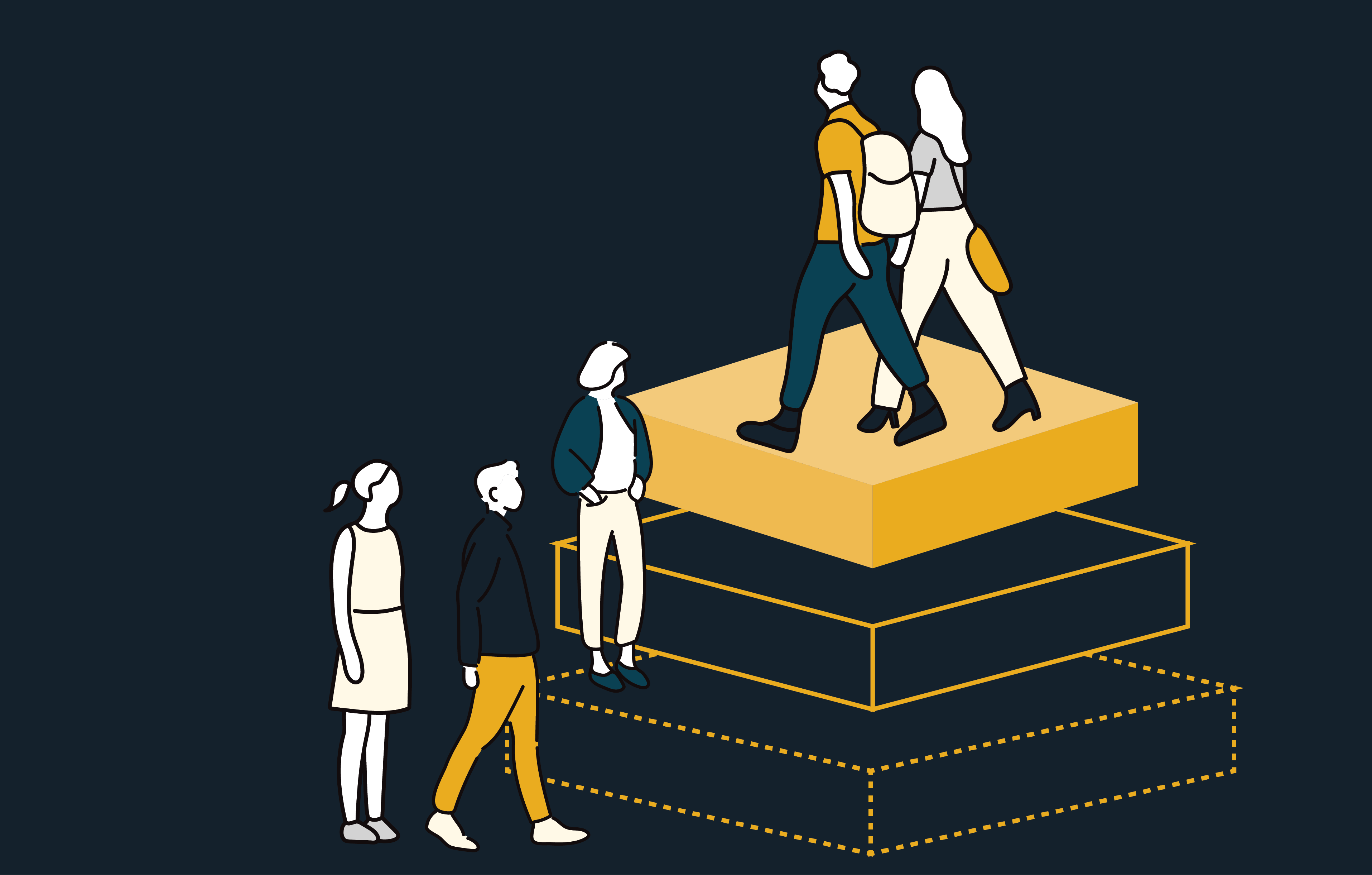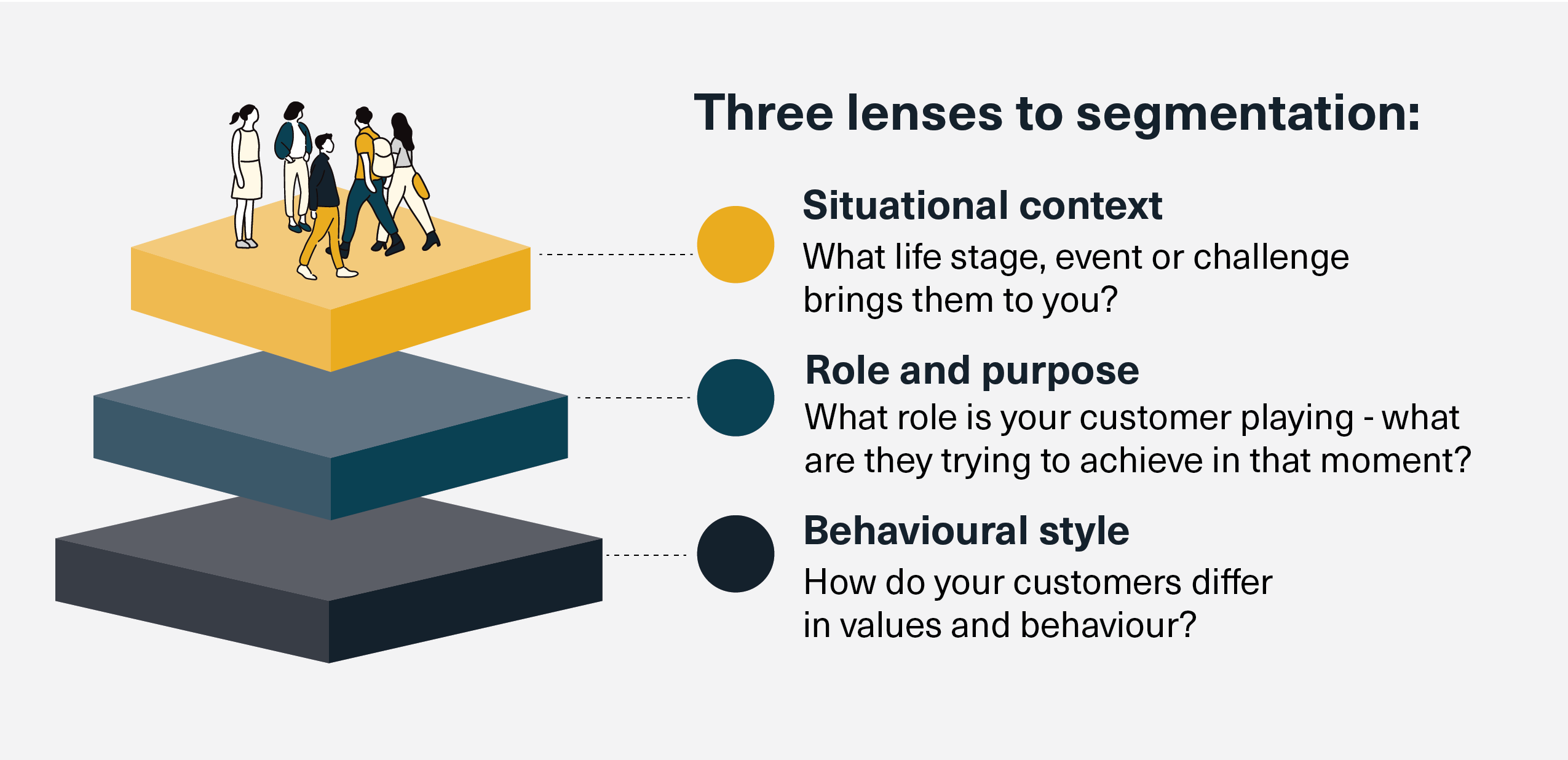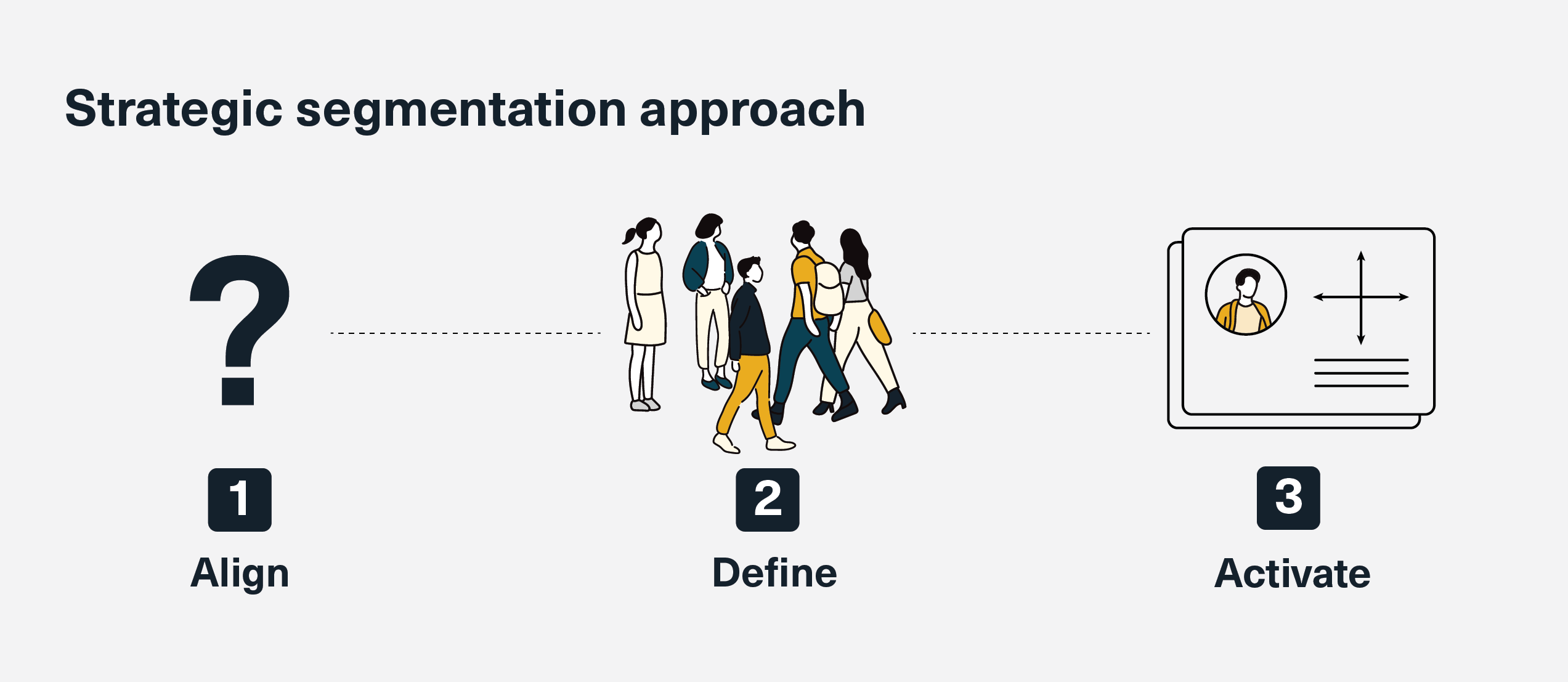One Size Doesn’t Fit All: A Strategic Approach to Customer Segmentation
Before you can improve customer experience, design better services or improve digital products, ask: who exactly are your customers?

bookmark_star Highlights
Why segment customers?
Most organisations think they know their customers. However, when challenged, they struggle to move beyond broad categories, like “young people” or “large businesses”. They may be using demographic data, but lack meaningful insight into what drives differences in needs and value for their customers.
Often, these organisations also lack a common understanding of who their customers are.
The business impact:
- Missed opportunities: Improvements fail because they target the wrong customer needs
- Average results: Generic experiences satisfy most customers but miss the mark for valuable segments
- Wasted resources: Teams operate in isolation, spreading similar effort across too many initiatives.
Instead of delivering one-size-fits-all experiences, segmentation helps you create specific value propositions, services and delivery approaches that connect with your different customers’ goals, needs and values.
Benefits of segmentation
Good customer segmentation gives your organisation a shared way to talk about and understand your customers. It goes beyond simple customer profiles to create a foundation that guides all design and service decisions.
When your organisation truly understands its customer segments, you can deliver:
- Better value propositions that target and resonate with specific customer needs
- Tailored service design and delivery that matches how different customers prefer to interact with you
- Smarter investment by prioritising and allocating resources to high-impact improvements
- Meaningful success measures that track what actually matters to different customer segments.
Successful organisations have clear customer segments backed by quality insights. This understanding helps them make better decisions about how to serve their complex customer ecosystems.
CEC’s Strategic Segmentation Framework
Segmentation can take many different forms and variations based on your organisation’s goals and customer context.
At CEC, we use a three-lens Strategic Segmentation Framework to understand customers better. By applying this framework and segmenting their customers, organisations can move from treating all customers the same to designing experiences that truly meet diverse needs.

Situational context
Situational context examines the circumstances that bring customers to you, their life stage, health status, business situation, or the specific challenges they're facing.
This helps you understand the context of their engagement and what success looks like for them.
Role and purpose
Role and purpose focus on what customers are trying to accomplish and the role they're playing in that moment. For example, in healthcare this might be the patient managing their condition, the caregiver coordinating care, or the family member navigating insurance.
Each role has different jobs to be done and measures of success.
Behavioural style
Behavioural style is about looking at how different customer groups act based on their attitudes and values.
For example:
- Some customers plan ahead while others react to problems as they arise.
- Some avoid risk while others embrace it.
- Some want to handle things independently while others prefer guidance.
- Some value speed while others prioritise relationships.
These differences affect not only how customers engage with you, but what they prioritise and how they make decisions.
How to segment customers

There are three key phases to strategic segmentation:
1. Align
Start by defining why you need segmentation and what success looks like.
This involves:
- aligning leadership on objectives
- determining what decisions segmentation must drive
- identifying the gaps between what you know and what you need to know.
2. Define
Use research and analysis to uncover meaningful customer segments across the three lenses.
This often combines qualitative insights with quantitative data to understand the situational contexts, roles, and behavioural differences that actually matter for your segmentation objectives.
3. Activate
Transform insights into practical tools that teams can use daily. This could include creating profiles or decision frameworks, but the approach will vary depending on your specific segmentation needs and goals.
The tools should enable everyone, from strategy to operations, to apply customer understanding in their work.
Bringing it all together
The key is ensuring each phase builds toward actionable insight and tools, not just interesting analysis or sentiment.
Example of Strategic Segmentation
Challenge
The Australian Digital Health Agency (ADHA) works within Australia's complicated healthcare system, involving government bodies, doctors, healthcare providers, carers, patients, and technology companies.
Digital health services affect almost every Australian. However, the agency lacked a clear, shared picture of who its users are and what they need. This knowledge gap prevented ADHA from creating digital health services that people could understand, trust, and adopt.
The solution
ADHA used segmentation to move beyond simple categories like "patients" or "providers." Instead, they identified who actually uses digital health services, how they use them, and what they need to succeed.
We applied our three-lens framework to clarify ADHA’s complex customer ecosystem:
- Situational context revealed a wide range of users, health-literate self-managers, digitally hesitant individuals, carers, clinicians, practice managers and technology enablers
- Role and purpose captured how people move between roles, such as managing their own care, navigating on behalf of a family member, or supporting system delivery
- Behavioural style uncovered key differences in digital readiness, trust, and decision-making that shaped adoption barriers and design priorities
Our process
- Align: Strategic intent was set to embed customer-centric thinking across the Agency, with the segmentation work forming a foundation of the broader CX Toolkit.
- Define: Research-led development of artefacts, including customer segments, ecosystem maps and a task model capturing common goals across health journeys.
- Activate: Tools were tested and embedded across teams, enabling consistent application from strategic design through to operations.
Results
The segmentation insights equipped ADHA to:
- Scale customer experience capabilities across the organisation
- Change internal thinking to focus on user needs
- Embed a unified view of users into all design decisions
It directly informed ADHA’s national COVID-19 vaccine rollout and continues to guide the development of future-focused digital health services that are more equitable, usable, and trusted by all Australians.
Your next step
If your customer initiatives aren't delivering the expected results, poor execution might not be the problem. You might be working with the wrong understanding of who your customers are.
Today's customers have more options and higher expectations than ever before. Understanding your customers properly has become essential for delivering services that truly work for the people you serve.
Ready to improve your customer initiatives?
A strategic segmentation workshop can help you:
- Find hidden gaps in your customer understanding
- Clarify exactly who you serve
- Identify the opportunities that will have the biggest impact
Get in touch with us to get started with a strategic segmentation workshop.
Published
5 August 2025
Written by
Megan Crawford
Lauren Terry
Keep reading
Ready to transform your customer experience?
Speak directly with our team of experts to explore your challenges, opportunities and needs.









